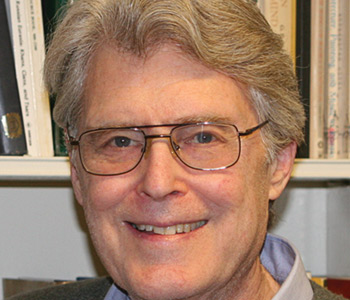Bénédicte Savoy
Africa’s Struggle for Its Art: History of a Postcolonial Defeat
Princeton University Press
240 pages, 6 1/8 x 9 1/4 inches
ISBN 9780691234731
From the 1960s onwards, European museum directors managed to hold off restitution claims from African countries for cultural property looted during the colonial era by strategically closing ranks and relying on essentially racist tropes. For the first time, the book traces these events through the rich documentation available in German, British and French archives.
The campaign driven by newly independent African countries began in 1965 with a passionate editorial by the journalist Paulin Joachim, entitled “Give Us Back Negro Art.” The article was received as a bombshell in European museum circles. A flurry of activities to discredit such requests ensued, with confidential memos being passed between museum officials on the best strategies for a defence.
UNESCO became another battleground for demands and refusals, with its director general Amadou Mahtar M’Bow’s legendary “Plea for the return of an irreplaceable cultural heritage to those who created it” in 1978. High-handed rebuttals came from the director of the British Museum, David M. Wilson, and from the leaders of ethnological museums in Germany, a relatively minor player in colonial power but with a competitive museum landscape which was especially rich in holdings. The legacy of National Socialism also played a part, as many senior figures had already served under the regime.
The campaign for African restitution later lost momentum when it was overshadowed by the appeal from Greece for the return of the Parthenon marbles, but it never ceased entirely. After decades, the repressed subject has now returned. When I worked with Felwine Sarr on the report on restitution of African cultural property in French museums for French president Emanuel Macron in 2018, we found that every conversation we have today about the restitution of cultural property to Africa already happened forty years ago.
I would like readers to look at the historical evidence through the lens of current changes in policy regarding colonial restitution. Museums with non-European art in the heart of Europe are walk-in showcases of colonial appropriation practices. They ask us as a society whether, in what form, and for how long we still want to live with these institutions in the twenty-first century. We need to find a new relational ethics.
I began my academic career as an art historian exploring Napoleon’s art theft in Europe and the ensuing trauma of what I came to refer to as translocation. Whereas Napoleon gathered the best available European artworks for a single Parisian super-museum during his campaigns, driven by a firm belief in the cultural superiority of Frenchness, European museums in general were filled to bursting during the colonial era. They competed heavily on the best and the most of everything that could be extracted from the colonies.
The colonial context implies that these items were taken by violence, in a relationship where the military and economic power was on the side of the colonizers. No continent was stripped of its cultural heritage as thoroughly as Africa in the nineteenth century: The major public museums in Paris, Berlin, London, Brussels, Vienna, Amsterdam and Leiden together hold more than half a million African objects.
Most of these collections were and are never on view. This allowed some museums, especially in Germany, to conceal the vastness of their holdings from potential claimants for decades. As I wrote in the book, “museums also lie.” It is only now that a drive for transparency and the opportunities offered in the digital age open more information to the outside world about these institutions. They are also increasingly inspecting and questioning their own history as conceptual creations of the nineteenth century.
Restitutions of cultural heritage are not the end of a story; they do not erase or replace anything. The pieces that leave or return have changed because times and people have changed. It is the return of the same, but different, and it is a new history that opens up, for the works themselves, but also for the societies that are attached to them, in Europe as in Africa.
My research focus is on causes and effects of the historical absence and presence of cultural property. The effects of dislocating culture do not simply disappear over time or though denying they exist. They are real.
Film and literature play a central role in the restitution debate of the 1970s, opening a space for political imagination. Many African filmmakers trained in former large colonial cities, where they began to address their own culture whose presence they encountered in museums.
Perhaps I can highlight the chapter on the film “You Hide Me” from 1971, a poignant graduation project by a twenty-six-year-old graduate of the London Film School, Nii Kwate Owoo. Here, the camera follows a young man into a museum’s exhibition hall, where he opens enormous glass showcases full of well-ordered African works from the Asante empire in what is now Ghana and from the kingdom of Benin. The voice-over describes their violent provenance, using terms such as looting and captivity. As the protagonist moves into further rooms, the commentator addresses another important asymmetry: the classification of African art by the former colonial powers, with Europeans and Americans presenting their expertise, and their selection of what were to be considered masterpieces, as unassailable.
The film is a pointed political attack against the uselessness of keeping African cultural goods in the depots of museums: an enormous hoarded capital buried in the collective unconsciousness of African and European societies. In the 1960s, films by intellectuals on the African continent were screened at Pan-African film festivals. Owoo won applause far beyond London for his statements and his work. His film continued to attract attention for years.
Ever since, popular films have addressed the restitution debate, from the 1953 anticolonial film “Les Statues Meurent Aussi” (banned by the French Film Institute for a decade due to its supposedly “biased and subversive character”) to “The Mask” and recently, “Black Panther.” These films continue to reach a wide public and make the argument for repatriation of African culture visually compelling. They pose the question outright, as Owoo did: “How can the government of independent African states explain to the generation that is now growing up that they can’t see their cultural heritage in their own countries?”
There is real value in turning to figures and initiatives of the 1970s and 80s for guidance today. It allows us to recognize the political, personal, administrative, and ideological constellations that used to shape the debate for half a century. We must seek to interrupt the institutional patterns enacted for decades in Europe.
One of the most satisfying consequences was the passing of a law at the French Assemblée Nationale in 2020, allowing to return a series of artefacts to Senegal and the Republic of Benin. There was not a single voice in the Assemblée raised in opposition to the law’s passing. For me that was extremely important. The fact that there was no opposition there made me realize that the people’s representatives – if you want to use that dated term – were in agreement with the project of restitution. I was thrilled to be in Cotonou for the arrival of great works from the musée du quai Branly Jacques Chirac in Paris.
This return was a very emotional event. I can see that the tide is turning. In 2018, when we discussed restitutions in Cotonou with the Beninese Minister of Culture, he said: “I do not believe in restitutions. But if they happen one day, it will be like the fall of the Berlin Wall or the reunification of the two Koreas.” Today, for African heritage in the world, the Berlin Wall has fallen. A large gap has opened in this wall, and some countries, like Benin, are already largely committed to the future. For me, it is not a matter of continuing to demolish the rest of the wall with a hammer. Instead, I observe those who today, on the African continent, are working to reconnect objects with their societies of origin. There is no more beautiful project.




We don't put paywalls. We don't distract you with ads. We don't sell your data.
Please help to keep this running!